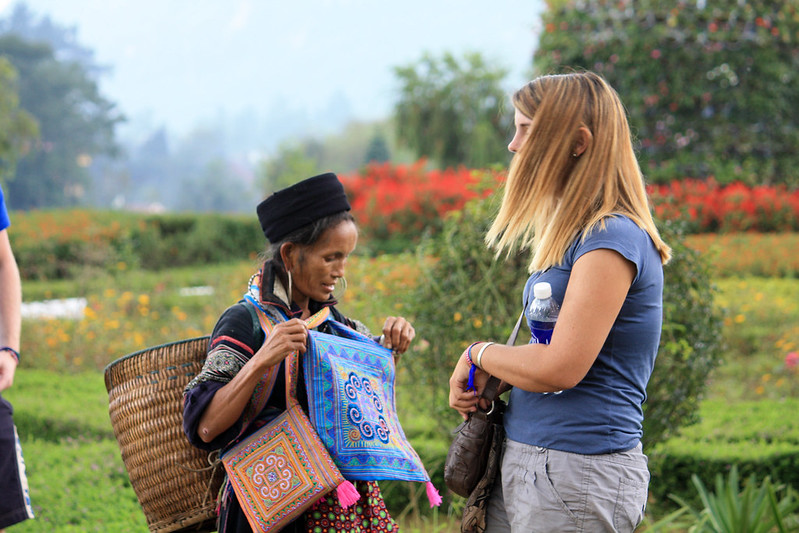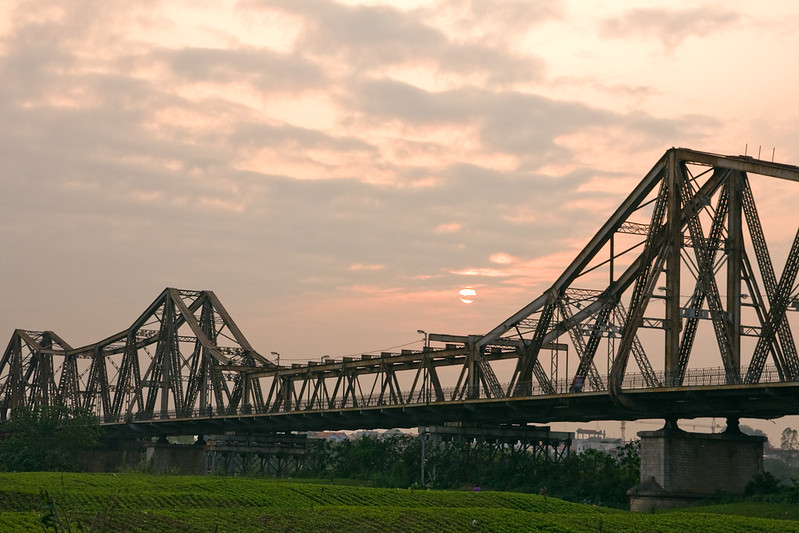Explore Ha Giang, Vietnam’s northern frontier, with terraced rice fields, the Ma Pi Leng Pass, and the rich cultural heritage of the Hmong people.

Located just 300 kilometers from Hanoi, Ha Giang offers a world of unique experiences, defined by its breathtaking landscapes and rich ethnic diversity. Nestled in Vietnam’s northern highlands, the province is famous for its dramatic limestone mountains, deep valleys, and vibrant cultural heritage.
Best Time to VisitThe ideal time to visit Ha Giang is between September and November, when the weather is cool and dry, with average temperatures around 28°C. Key seasonal highlights include:
- Terraced Rice Fields: Late September to early October marks the ripening of the province’s terraced rice fields, a mesmerizing sight as they turn golden.
- Buckwheat Flowers: In November, the northern highlands bloom with delicate buckwheat flowers, creating pink and purple carpets across the region.
What to Explore

1. Dong Van Old Quarter
Nestled in a valley surrounded by rocky mountains, Dong Van Old Quarter is a unique gem that preserves much of its early 20th-century architecture. Originally home to the Hmong, Tay, and Chinese families, the old town now boasts 40 two-storied houses with yin-yang tiled roofs, yellow walls, and red lanterns.
- Lantern Festival: Held on the 14th, 15th, and 16th days of each lunar month, this festival sees the town decorated with red lanterns and stalls selling ethnic brocade and traditional foods.
- Pho Co Café: For an authentic experience, enjoy a cup of coffee at the Pho Co Café, known for its Chinese-Vietnamese architectural charm.
- Sunday Flea Market: Every Sunday morning, the market comes alive with local products made by the Hmong, Dao, Giay, and Tay ethnic groups. It’s also a social hub for young women in colorful traditional costumes.
2. Hmong King’s Palace
Located in Sa Phin Valley, the Hmong King’s Palace offers a glimpse into the region's history during the French colonial era. Built in the early 20th century, the palace showcases Qing Dynasty architecture with 64 rooms connected by intricately designed corridors.
Admission Fee: VND 20,000 per person.
3. Lung Cu Flag Tower
Standing tall at 1,700 meters above sea level, the Lung Cu Flag Tower symbolizes Vietnam’s sovereignty. The octagonal tower is crowned with a massive 54-square-meter flag, representing the country’s 54 ethnic groups. Visitors must climb 389 stone steps and 140 iron spiral stairs for a panoramic view of the surrounding region.
4. Ma Pi Leng Pass
One of Vietnam’s most dangerous and scenic mountain passes, Ma Pi Leng offers awe-inspiring views. The pass is part of the "Happiness Road," built by Hmong workers and completed in 1965. It’s a thrilling but risky drive, and many tour operators now offer guided tours to help inexperienced travelers navigate its steep curves safely.
- Nho Que River Boat Trip: For VND 100,000 per person, enjoy a 30-minute boat ride on the turquoise waters of the Nho Que River, offering stunning views of the towering cliffs and Tu San Canyon, one of Southeast Asia’s deepest canyons.
5. Pho Tro Village
Located on the outskirts of Pho Bang Town, Pho Tro Village is famous for its traditional trinh tuong houses with yin-yang tiled roofs. The village has seen infrastructure improvements, including better roads and facilities, to develop tourism.
6. Hoang Su Phi Terraced Rice Fields
For an unforgettable experience, visit Hoang Su Phi District, home to 3,000 hectares of terraced rice fields. These fields are at their most beautiful from late September through early November, forming golden yellow carpets across the mountains.
Accommodation: Homestays in villages or motels in Vinh Quang Town offer rooms for VND 250,000–550,000 per night.
Where to Stay- P'apiu Resort: Located in Bac Me District, this luxurious resort is known for its tranquility and eco-friendly atmosphere, with rooms starting at VND 9.8 million per night.
- Hmong Village Resort: Situated in Quang Ba District, this resort offers 25 bungalows designed to resemble traditional Hmong baskets. Prices start at VND 2.4 million per night.
- Budget Homestays: In Dong Van and Meo Vac districts, budget-friendly homestays range from VND 100,000 to 230,000 per night.
What to EatHa Giang’s culinary offerings reflect the diversity of its ethnic communities. Must-try dishes include:
- Xoi Ngu Sac (Five-Colored Sticky Rice): A local specialty made with natural dyes from fruits and plants. It’s commonly found at Dong Van’s Sunday market.
- Triangle Buckwheat Cake: Made from buckwheat seeds, this steamed cake is a regional specialty, especially in the fall when buckwheat flowers bloom.
- Thang Den: Similar to Hanoi’s banh troi, this glutinous rice ball dessert is served with sweetened coconut milk and ginger syrup.
- Au Tau Porridge: A special porridge made from the poisonous roots of the monkshood aconite plant, traditionally prepared by the Hmong people and only available at night.
How to Get There- By Bus: The easiest way to reach Ha Giang from Hanoi is by overnight sleeper bus. Tickets range from VND 200,000 to 350,000, and the journey takes around six hours.
- By Motorbike: Adventurous travelers can hire a motorbike for VND 150,000 per day to explore Ha Giang’s winding mountain roads. For a scenic route, take National Route 2 from Hanoi to Ha Giang Town.
Final Tips- Clothing: The weather can be chilly at night and in the early morning, especially in higher elevations. Be sure to bring a jacket.
- Safety: Roads in Ha Giang can be treacherous, particularly during the rainy season. Consider hiring a local guide or using organized tours for challenging routes like Ma Pi Leng Pass.






















